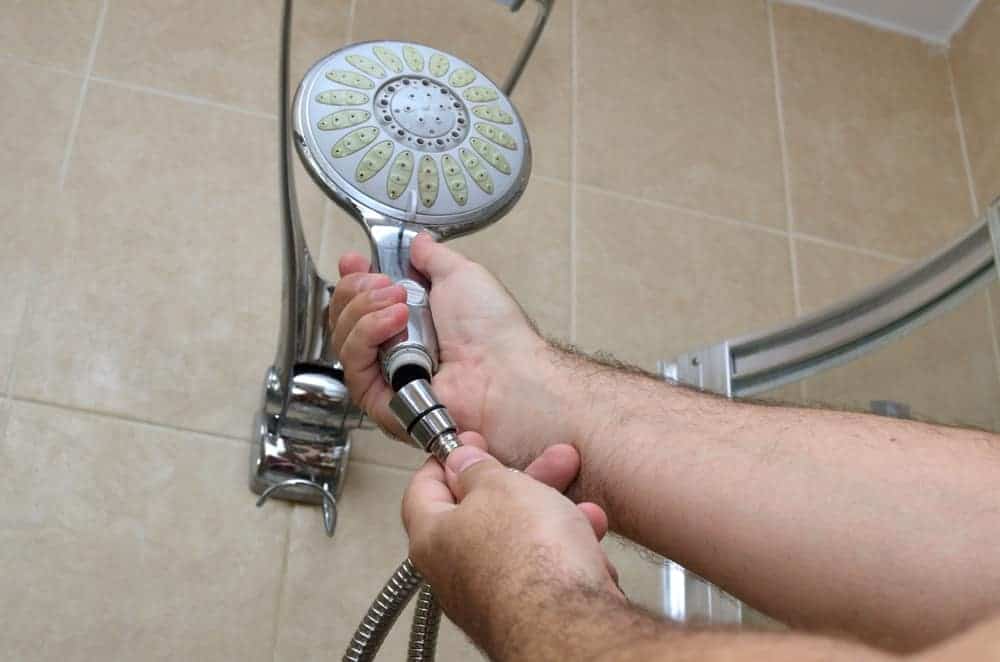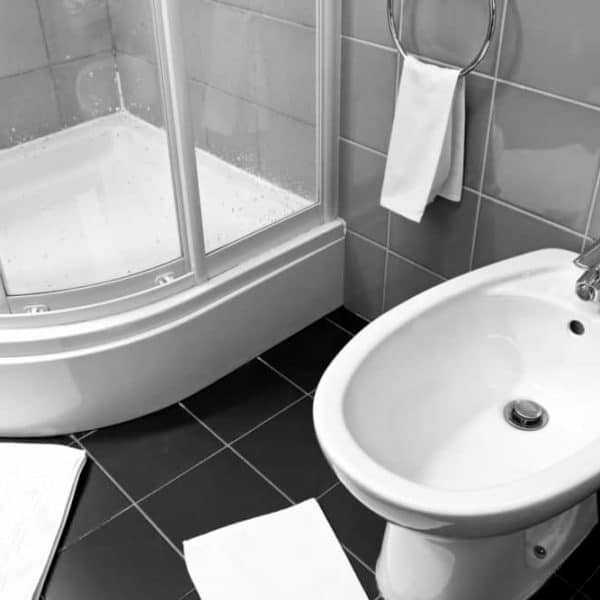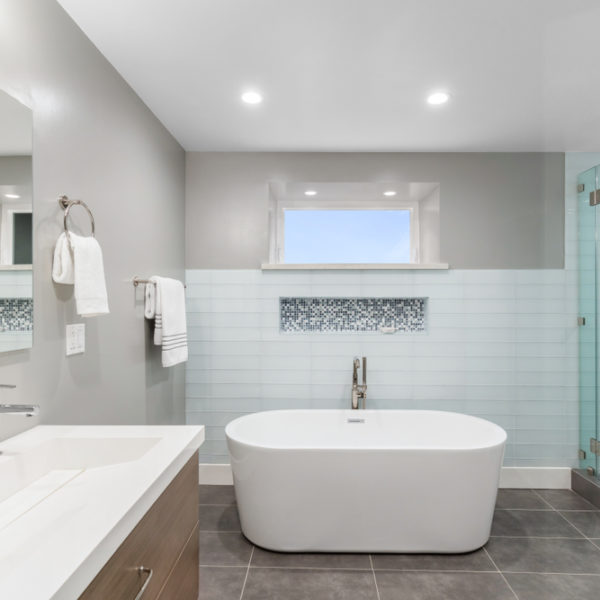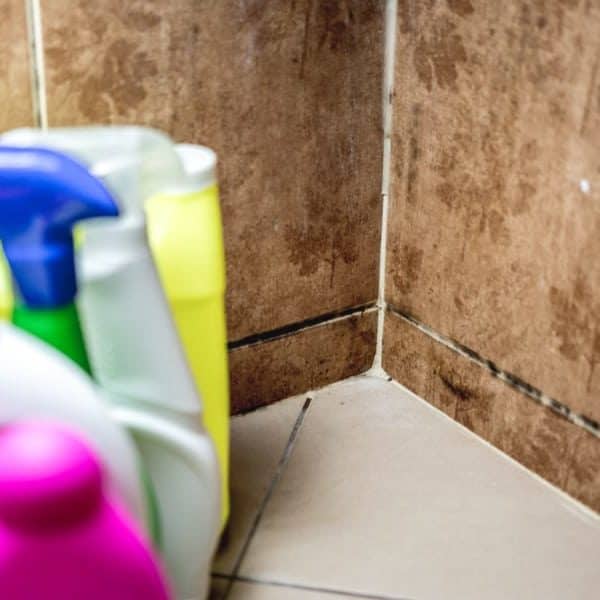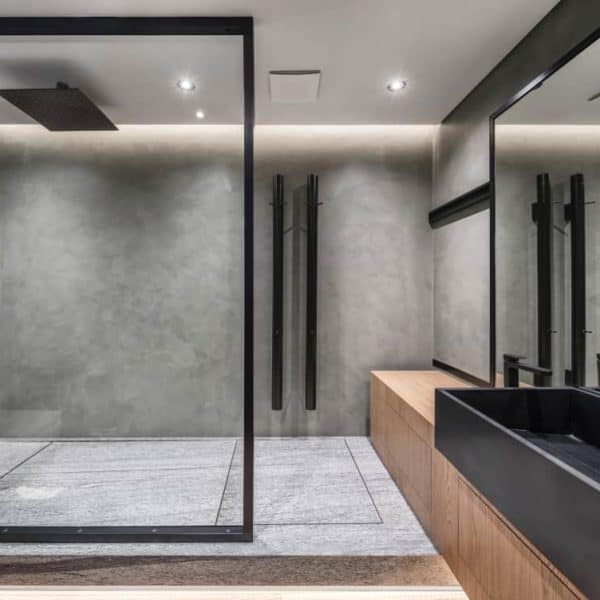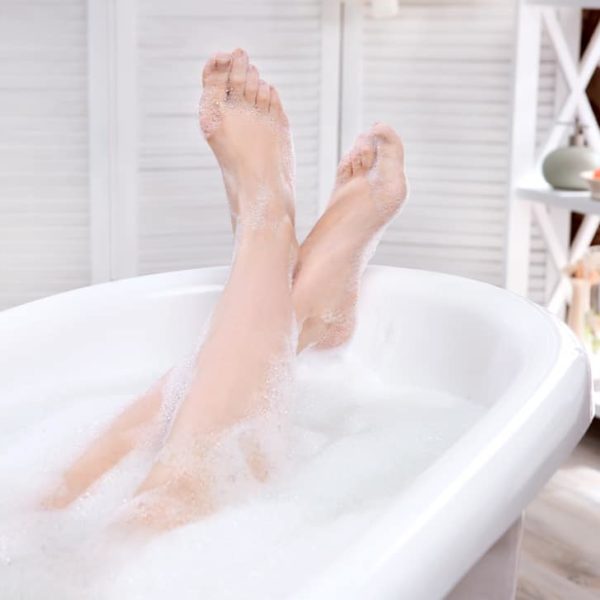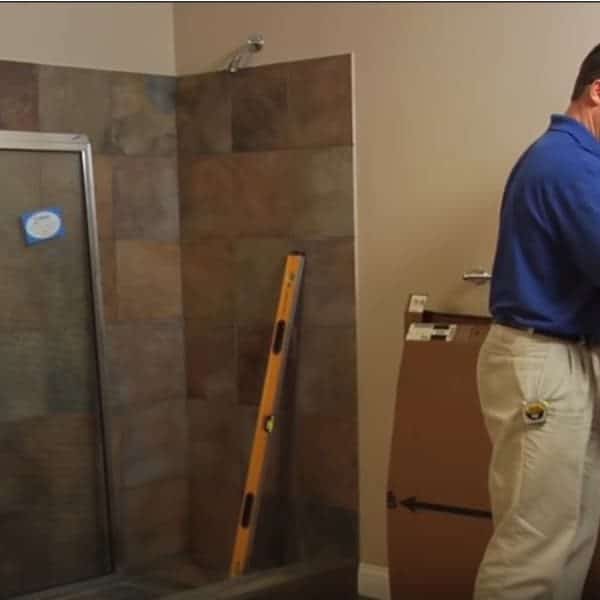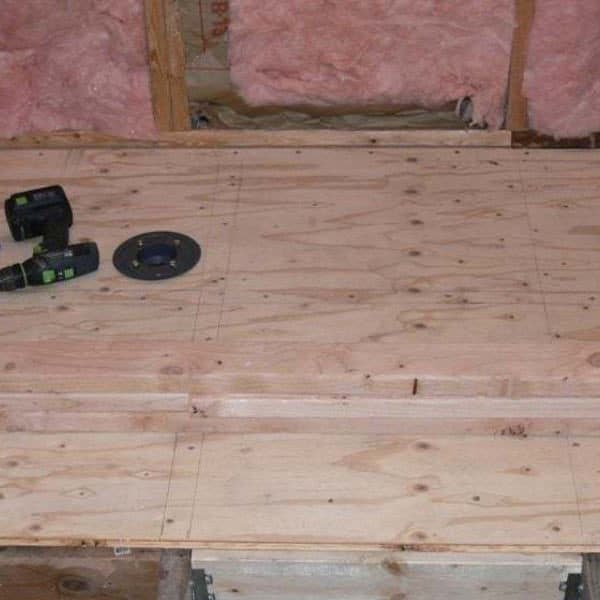Handheld showerheads are super functional items that have become increasingly popular. Years ago it was not so common to see A handheld showerhead in bathrooms, but today most high-end bathrooms have this option. It is also very common to see them in hotels and resorts.
If you are thinking of installing one of these handheld showerheads in your bathroom, either to make it look better or for practical reasons, you should keep in mind that there are many ways to do it and many accessories with different options.
In this article, we want to present you with all the options and cover all the possible scenarios that you may face when trying to change your traditional shower for one of these handheld showerheads.
That way you will know what is best for you, what is best suited to your current bathroom, and which of all the possible options is the one for you.
What is the Definition of a Handheld Showerhead?
There are various names for a manual shower head. You may have heard it called a shower spray or a more technical name like an adjustable shower head, but they all relate to the same thing.
A handheld showerhead is a mobile or maneuverable showerhead with a flexible hose that allows you to manually detach the showerhead from its mount. As a result, this item is quite versatile and may be used for a variety of purposes in the bathroom.
The other end of the hose must be linked to a water source in the bathroom, which is normally the current shower installation, but we will look at the potential of installing it through the bathtub faucet and sink in this article.
You’ll have a better idea of what suits you this way. Remember that each bathroom has its own unique characteristics, especially if your bathroom has a lengthy history. Not all water outlets are created equal, which is why we want to go through all of your options so you can choose the ideal one for you.
Handheld shower head advantages
There’s no denying that bathroom shower heads make life simpler, but if you’re still unsure about the advantages of installing one, consider the following suggestions.
- This item should not be absent from your bathroom if you have little kids. It’s great when you have tiny children who need to be washed and rinsed thoroughly from all sides, thanks to the hose and the ability to detach the shower head from its location.
Also, keep in mind that children are always playing, so if your children are a little tough and disobedient when it comes to washing, a hand shower may double as a toy and make bathing easier.
- If you don’t have children, but do have dogs, and you use your bathtub for their bathing on a regular basis, the hand shower will come in handy. Remember that our showers are made for a human’s typical height, which is why bathing our canine companions is so tough.
You should also bear in mind that not all dogs behave the same way when they’re bathed; some are naughty and agitated, so you’ll want to keep both hands as near to your pet as possible to manage them and finish their wash, and the hand shower is ideal for this.
- Hand showers are essential if you live with an older person or someone who has a condition that makes it difficult for them to move about. Bathing the elderly or handicapped in the bathtub is the finest option.
Not only is it easier to wash someone in this manner, but you also avoid the possibility of the individual slipping and injuring themself. Remember that a minor fall, which for us could simply result in a bruise, might be a major difficulty for an elderly person.
Their bones have deteriorated with time, and we must use extreme caution when assisting them in the restroom if we are not to cause a severe accident.
- Another advantage of having a handheld shower head is that the bathroom will be cleaner. Many people use hand showers to get to regions that are difficult to clean.
It’s considerably more convenient than having to go get water every time you need it, or washing and wringing out a rag or cleaning brush. If you have a hand shower, you may, for example, complete scrubbing the shower walls with a brush and cleaning agent and instantly wash even the toughest corners.
7 Ways to Install A Handheld Showerhead to an Existing Shower
Although it may not appear so, this article has a broad range of styles and solutions that cater to the many characteristics of bathrooms as well as the preferences of each consumer.
If you want to install a handheld showerhead in your bathroom, you’ll have a lot of choices. In this article, we’ll go over all of them so you can decide which one is best for you.
1. Replace the shower head that is currently installed.
The most straightforward solution is to remove the existing shower head and replace it with a hand-held shower head.
Despite the fact that it is the simplest option, it is probable that many people will not choose it. For a variety of reasons, some people decide to preserve their current shower.
Assume the shower head is that of a Spanish shower, which has a huge spray of water and is quite relaxing to bathe in. Nobody wants to switch from a large Spanish shower to a little hand shower.
This option is a terrific alternative if you are unhappy with your present shower or if it is really old and the holes are filled with scale.
2. At the same time, replace the shower head and arm.
For aesthetic reasons, this choice is great for people who want their new handheld shower head to be flat against the wall and not protrude.
Remove the old shower head as well as the arm, and attach the new shower head to an adapter tube or a short shower arm.
The outcome is a very clean minimalist style that adds a sophisticated touch to the new handheld shower head, which may take up a lot of space and sometimes does not look well visually due to the hose or being put on an existing connection.
3. Set up a slider bar.
To maintain your shower head at the proper height, you’ll need a shower rod. The bar is usually constructed of stainless steel and comes in various lengths. It is attached to the wall or the shower stall. It may feature a soap dish as well as a convenient holder for hygienic items.
To install a slider bar, remove the shower head and arm and replace them with an adapter tube that will link the new shower head to the shower bar, which will then provide support.
Shower rods can be purchased with a handheld shower head already attached. They are luxury accessories with a broad range of styles that provide a sophisticated touch to our bathrooms.
4. Set up a diverter valve
You can add a diverter valve if you wish to preserve your old shower. This sort of valve allows you to control the flow of water to several accessories, such as a hand shower, and then pick which one to use. It’s pretty similar to the mechanism in which you press a lever and water flows from the tub spout to the shower spout in some ancient bathrooms.
You may use a sliding bar or a showerhead holder in conjunction with the diverter valve to keep your new hand shower from hanging.
The benefit of the sliding bar is that many of the designs for sale have soap dishes or conditioned places where you can store cleaning supplies like shampoo, saving you from having to purchase an additional accessory for the same purpose.
While a shower head holder is perfect if you want a less overcrowded and more minimalist appearance in your shower, a sliding bar might be too much for some people and take up more room than they desire.
5. Handheld Showerhead on the Tub Spout
Installing a handheld showerhead on the bathtub spout is another excellent option. Although not every bathroom has a tub or a spout to fill it, if yours has and you don’t use it much, you could believe it’s a smart idea to use that water source for your new handheld shower.
The only thing to bear in mind is that bathtub peaks differ significantly depending on the year they were produced and the type. Although there is a standard size, not all bathtubs adhere to it.
Rubber cups are used to connect the shower head hose to your bathtub and are installed at the end of the hose. The criteria are to acquire the closest measurement to the spout of your bathtub, and if you can’t, attempt to make it larger, as you can always buy a metal worm screw clamp to modify it to the appropriate measurement.
6. New bathtub spout and diverter valve
There’s no reason to get rid of the bathtub spout if you’re one of those people who takes a soothing soak in their bathtub on a regular basis. You may have both choices by simply installing a diverter valve adjacent to a new bathtub spout.
This is a very practical solution that will free up space in the shower area. You will have more flexibility to maneuver the hand shower since it is positioned at the height of the bathtub spout, and the length of the hose may be better tailored for jobs such as cleaning or bathing children because it is installed at the height of the bathtub spout.
7. Handheld Showerhead for Sink
If you can’t or don’t want to put a hand shower in your bathtub due to circumstances beyond your control, this is the last alternative. Models that may be put in the bathroom sink are available.
The disadvantage of this solution is that you will not be able to shower with your hand shower since it will be impracticable to shower with a hose attached to the sink and risk falling and flooding the entire bathroom floor.
Most individuals who choose this option just use their hand shower for a few minutes before putting it away; nevertheless, you should not keep it attached all of the time because it will disable your sink.
However, if you want to wash your hair without going in the shower or after dying your hair, having this sort of facility is a fantastic idea. Just keep in mind that you’ll have to draw the hand shower in and out whenever you need it.
Step by Step on How to Add a Handheld Showerhead to a Shower that Already Exists
We can summarize the alternatives for installing a Handheld Showerhead from all of the options we’ve seen so far as follows:
Connect the new handheld shower head to an existing water source, such as a shower arm, sink, or bathtub spout. You won’t have to get rid of any accessories since you’ll be able to put them on top of what you previously had in the bathroom.
The second alternative is to install a diverter valve that will allow you to utilize both the old and new connections at the same time. In many situations, however, this alternative will need replacing the shower or bathtub spout as well, as older types are not always compatible with newer designs that come with this fully integrated system.
For your consideration
- When removing the old shower head, use extreme caution. It’s best if you use channel pliers or an adjustable wrench for this.
- When loosening anything to remove it, keep in mind that you must do so in an anticlockwise manner, but tightening an accessory must be done in a clockwise way.
- If you’re going to use pliers or an adjustable wrench, it’s a good idea to cover the component you’re going to move with rags so you don’t ruin the finish.
- Take care not to damage the shower arm when removing the mobile shower head. Threads can stay inside the wall fitting after breaking or breaking, making removal a difficult and time-consuming procedure.
- Take some time to carefully clean the threads on the shower arm after you’ve removed the old shower and before you install the new fittings.
- After everything is tight, we recommend covering the threads with Teflon tape or plumber’s tape to secure your installation. This is critical since it ensures there are no leaks in the connection.
Requirements
- Hex key
- Pipe-sealing tape for plumbers
- Handheld shower head
- Channel-lock pliers or an adjustable wrench
- Tub spout with diverter
- A thick piece of fabric
- Drill and bits
Steps# 1
You must attach your new shower head to your shower arm or wherever the water source is in your shower after carefully removing your old shower head or shower arm and sealing your installation as advised above.
Screw it in clockwise, and after it’s in, hold the junction between the shower head and the shower arm together without applying too much pressure or tightening it all the way.
Steps# 2
To connect the hose, first seal the threads at the base of the shower head with the plumber’s tape, then thread the shower hose into it. Squeeze the hose securely with your hands, then open the tap to check for leaks after attaching the shower head to the hose’s end.
If it’s still not snug and there’s a leak, tighten it with the wrench, but make sure you wrap the piece in a thick towel so you don’t damage it.
Steps# 3
A wall mount is included with some shower heads. When you use this attachment, it will provide you with instructions on how to correctly put it. All you have to do is follow each model’s directions to the letter. Keep in mind that to install a wall bracket, you’ll need to use a drill to drill the holes in the wall, since most brackets require expanding anchors.
Adding a Hand Shower with a Shower Diverter
This option is for individuals who wish to maintain their existing shower while getting a new one installed. You’ll need to install a T diverter to route the water to the new or old shower.
Steps# 1
You must remove the old shower head and attach the tee to the shower arm. Tighten using your hands, no wrench is required at this point.
Steps# 2
Replace the shower head after inserting the tee, and don’t forget to wrap the plumber’s tape around the threaded connections. Before using the wrench, screw on the original shower head and tighten it with your hands.
Steps# 3
Place the new shower hose in the opposite outlet of the T-shaped diverter. Adjust it by hand, then check for a leak. If there is one, use the adjustable wrench to fix it, but always protect the components you’re about to put in with a thick towel.
Using a Tub Spout Diverter Valve to Add a Hand-Held Shower
If you don’t think it’s a good idea to put a shower head on an existing one, you can always use the bathtub spout to put a diverter valve.
Steps# 1
There are two types of bathtub spouts. You’ll also need to figure out what kind of screw is used to unscrew the bathtub.
If the screw head is hex, an Allen key will be required. But if your bathtub spout does not have a fastening screw, you may simply unscrew it using channel lock pliers.
Remember that in these situations, you’ll have to remove the old bathtub spout and replace it with a brand new one.
Steps# 2
Replace the old tub spout with a new one after removing the old one. If the item comes with a set screw, use an Allen key to install it.
If it’s a threaded spout, tighten it by hand, making sure to use the plumber’s tape on the pipe threads and inspect for leaks. Use the wrench if it’s still not precisely tight, but be cautious not to harm the spout.
Steps# 3
Connect the hose to the spout’s diverter valve threads. To provide a tight seal and prevent water seepage, wrap plumber’s tape around the threads.
Place the shower head on the bracket of your choice or the one that comes with the entire system once you’ve placed it on both ends.
Shower brackets or sliding arms normally come with installation instructions and need the use of a drill to make holes in the wall.
As you may have observed, there are several ways to enjoy a new shower head, whether you choose to replace your old one, utilize a diverter valve, or install it on the tub or sink spout.
It’s a simple job that you can perform yourself rather than paying a professional to complete. You will not only save money, but you will also have a better understanding of your own bathroom and its amenities. You can also use this exercise to examine how your plumbing connections are doing and whether they require any repair. Always keep in mind that a careful man is worth two.
